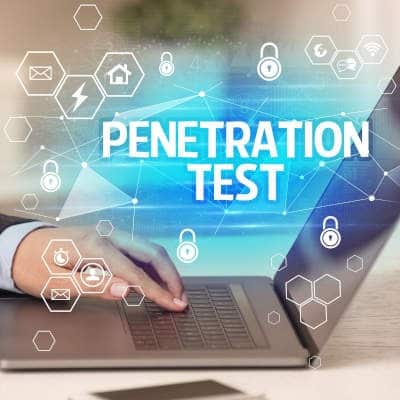These statistics outline that by allowing employees to work from home, your company will see some very tangible benefits. Like any human resources strategy, however, you’ll need to keep a few considerations firmly in mind to get the most out of it. Treat It Like Business as Usual When you are working with your remote employees, it is important that you don’t focus exclusively on your in-house staff. Maintaining communication with every one of your staff is necessary for your operations to continue, so if anything, you need to encourage your in-house workers to regularly check in with your remote employees and involve them in their processes. You should also avoid the temptation to hold off on meetings. Again, don’t act like anything has changed as a result of your employees working from home. If you have regular meetings at a given time, continue them, and simply use the technology available today to include your remote staff members. Provide the Means to Communicate Speaking of which, it is also important that your remote team members have the tools that allow them to communicate with their contemporaries. If you haven’t already done so, consider switching your telephony to a VoIP (Voice over Internet Protocol) solution. This will enable your remote staff members access to your business’ phone system, rather than using their own for professional purposes. Other useful collaboration tools include things like video conferencing, instant messaging, and (of course) business email. Give Them Access and Tools Your remote workers aren’t going to be capable of being productive if they don’t have access to the necessary resources and applications required to carry out their assigned tasks. Make sure they have this access, either by enabling remote access into their workstation or by providing them with a laptop that they can take with them. It is recommended that, if you elect to take the remote access option, this access is secured through the use of a virtual private network (or VPN). This tool ensures that whether your files and applications are stored on-site or in the cloud, that access to data is available from anywhere a connection can be established. Don’t Forget About Security It is critical for the health of your business that you uphold remote workers to a higher standard for data and network security. Remote work brings increased risk. Using the aforementioned VPN is just one of the many tools that will work to maintain the integrity of your business’ digital assets. Another important security measure is to be sure that your remote users are forced into using password best practices for authentication. Some Suggestions: Hosted VoIP for using phones from any device and anywhere. A VPN for secure connections to the office network. Remote access policies to ensure compliance and security. Remote terminal access to keep files and applications centralized. Email accessibility for internal and external communication. Conferencing and meeting applications to keep your team engaged. Messaging applications to facilitate easy coworking. G-Suite/Office 365 for document publishing and collaboration. Disaster Recovery solution to prevent productivity-loss issues. Our IT professionals are here to help you extend the reach of your business and do it to ensure that your assets are protected. Reach out to SRS Networks today to kickstart your remote workforce on a path to productivity. Call (831) […]
Using the Outlook Polling Feature To create a poll, pull up Outlook and start a New Email. Proceed as you would with any email, filling out your subject line and identifying who it should be sent to. You can then insert a poll by clicking into the Insert tab and selecting the Poll option, or by navigating to the Options tab of your message, clicking Use Voting Buttons, and selecting Poll. A window will appear that allows you to specify the question you want to ask your recipients, as well as the capability to customize your answers. You can add additional responses by clicking +Add option. Be warned, the poll has a character limit of 330, many of which are taken up by the poll structure itself, so keep your polls brief. To authorize multiple responses, you can toggle the Multiple answers button to green. Once your poll is completed, click Insert poll into email, and it can be shared. Reviewing Your Results Once you’ve created this poll, the results will appear to you in your version of it. So, if you keep it brief, Microsoft has provided a very useful way for its users to collect feedback. You can also review your results—as well as how the vote broke down amongst your users—by clicking on Review answers or the button labelled Open in Excel. A Few Caveats You should be aware that this feature is only available to those using a Microsoft 365 hosted email account, with a subscription to Microsoft 365. So, does this sound like something you could use? Share your thoughts with us in the comments!
Over the next couple of weeks we will be looking at the smartphone market from the flagships, to innovative new devices, to the budget smartphones that can present consumers a lot of value. The Flagships Flagship smartphones are the cream of the crop—by designating a particular device as their flagship, a manufacturer is stating it’s the best-period-option-period-available-period. Every spec or component is improved as much as possible. They are the devices in demand, and as such, they’re the ones with the largest price tags. It isn’t uncommon for many of today’s flagships to out-spec many PCs. This is simply because mobile computing is the new default for many. Whether they’re creating content, using an app, or whatever, people are going to want a device that can do what they need it to do, when they want to do it. This is why flagship devices are produced. Here are the ones coming out from now until the holidays: iPhone 12 Pro Max As the first official smartphone manufacturer on the market, Apple has always proven itself a contender. This has only been reinforced over the past three years. This year’s model of their trendsetting device, the iPhone 12 Pro Max, bears the same stainless steel construction as other recent models with Gorilla Glass 6 on its front and back. The 12 Pro Max features a massive 6.7-inch Super Retina OLED display with a 1,284 x 2,778 resolution, equalling about 458 pixels per inch. The specs look just as good as the device does. The iPhone 12 Pro Max is equipped with Apple’s proprietary A14 processor, the first-ever 5 nanometer processor seen in a smartphone. While there is no expandable memory, it comes with 6 GB of RAM and up to 512 GB of onboard storage. While the 3,687 mAh battery may seem a little small, the optimization settings built into iOS 14.1 gives it enough efficiency to power through. Plugged in, the device has 20 watt fast charging and 15 watt wireless Qi charging. As for cameras, the iPhone 12 Pro Max features a similar set as its 11 counterpart with three 12 megapixel lenses, but with the added photo depth benefits of an added Time of Flight sensor. Coming the second week of November 2020, the iPhone 12 Pro Max will be available in Silver, Graphite, Gold, and Pacific Blue. Apple iPhone 12 Pro Max Body: Stainless Steel with Gorilla Glass 6 Display: 6.7-inch Super Retina OLED (~458 ppi) OS: iOS 14.1 Chipset: A14 Bionic Memory: 6 GB RAM, up to 512 GB onboard storage Expandable Memory: No Cameras: Rear: 12 MP (wide), 12 MP (ultra wide), 12 MP (telephoto) 2.5x Front: 12 MP (wide) Sounds: Stereo Speakers, no headphone jack Battery (battery endurance rating): 3,687 mAh (~100 hours) Security: Face ID Miscellaneous: Accelerometer, Gyrometer, Proximity, compass, barometer, Siri assistant, IP68 dust/water resistant Other versions: iPhone 12 Mini, iPhone 12, iPhone 12 Pro OnePlus 8 Pro The OnePlus 8 Pro is the first real flagship model built by a Chinese device manufacturer with a growing market share in the west. Coated front and back in Gorilla GLass 5 and built on an aluminum frame, the OnePlus 8 Pro is built with ergonomically-friendly curves. WIth a 6.78-inch AMOLED display, it can hold its own comfortably with the flagships from Apple and […]
The Benefits of Cloud Computing Before we get into the negatives presented by cloud computing, we should look at the benefits. Today’s cloud is a secure, reliable computing option that can provide a business the access to tools that can help their ability to coordinate, execute, and support their operations. Additionally, most computing tools that you can host yourself, you can host in the cloud. With different parts of your businesses needing different tools to function this can substantially decrease your capital output for your business’ IT. On top of the massive amount of workable options available, most cloud computing platforms are managed by the cloud provider, further removing the coordination and cost associated with IT support and system administration. For this reason, cloud computing is often looked on as having a lot of value, especially regarding solutions for collaboration, storage, backup, and communications. So, What’s Bad About Cloud Computing? After listing all the positives, what could possibly be negative about cloud computing? In the cloud, companies often pay too much for their computing. Now you have to understand, the ease of use, the scalability, and the anytime/anywhere access provides value of its own, no doubt, but if you pay too much for your business’ computing, you are still paying too much. While cloud computing does make a lot of sense for many businesses, if you overextend yourself with SaaS offerings, storage, or processing you may actually be renting for a lot more than you think. Think about your business’ computing like buying a house vs. renting. When you pay the per month rate from another provider, you are effectively renting your tools. Sure, owning your own house takes a lot more capital up front, but payments are less expensive and eventually, you’ll own it. If you don’t like that analogy, then consider that a company that loses track of its cloud output, or overextends itself in the cloud, is throwing away money. If that goes on for a few months, it could have a major effect on your technology budget. At SRS Networks, we want to help you make the best technology decisions for your particular situation. If you would like to get an assessment, or if you just want to talk to one of our IT professionals about how you can affordably improve your IT, reach out to us today at (831) 758-3636.
While these potential threats are frustrating to look out for, that is exactly what needs to be done to prevent their success. Here are five tips to help you spot a phishing attack before it is too late. Extreme Urgency When somebody is trying to phish you, they often rely on you panicking and not fully thinking through the message. That’s why, whenever you receive an email labelled “urgent” and written in an intimidating tone, you need to take a few breaths and consider it a little more. There is no questioning that email is an extremely valuable communication tool, but at the same time, would it really be how you sent someone an urgent, time-sensitive message over something like a phone call? Even if it does come in via a phone call, any message you receive should be carefully considered before you act. Attachments Email gives business users so much utility, but that also lumps in those who make cybercrime their business as well. Email makes it much easier for a cybercriminal to send along a malware payload, hidden inside an attachment. Therefore, you should never click into an email attachment that you didn’t anticipate receiving, and even think twice about the ones you did expect. Many organizations—like financial institutions and the like—are favorite ruses of cybercriminals, despite the fact that these organizations will either use a dedicated solution to reach out to you or call you directly before sending along an attachment. Unless you know with confidence what an attachment contains, it is best not to click on it at all. Spelling and Grammar Errors Let me ask you a question: if you were to receive any kind of written correspondence from a business, whether it was an email, a letter, what have you, would you take that business seriously if it was riddled with mistakes and misspellings? Unlikely. Businesses are generally very aware of this, and usually put forth the effort to ensure that the materials and messages they send out are carefully edited before they distribute them for this very reason. Would you trust this blog if every other sentence featured a misspelled word or misused punctuation mark? In a phishing message, however, the individual writing it is actively banking that their reader won’t be paying too close attention, making such errors less important. While this isn’t a hard and fast rule, it is a good way to keep your business safe. Requests for Personal Information In a similar vein, does it make sense that a business that presumably already has your sensitive information would reach out and ask for it again via email? No, it doesn’t, and that’s why legitimate businesses tend not to do this. While this is also a generalization and there will be exceptions, a scammer will generally be the only party to request sensitive and personal information over email. A legitimate business will have a different tool they use to collect this data if they need it, as they need to abide by the compliance and security requirements that are likely imposed on them by some regulatory body. Suspicious Links Finally, we need to discuss links, particularly those that come included in a surprise email. Links are remarkably easy to manipulate, so while you may think you’re visiting another business’ website […]
Let’s take a few minutes to examine the ramifications of this improvement, and how it will impact how users can identify themselves as legitimate in the future. What is CAPTCHA? CAPTCHA, or Completely Automated Public Turing Test to tell Computers and Humans Apart, is what Google uses to catch automated spam before it assaults the Internet. The idea is that there are certain ways that humans will interact with content differently than automated spam can. Therefore, by requiring a certain task to be completed in a certain way, the legitimacy of a user can theoretically be verified. At the turn of the century, CAPTCHA was highly effective against spambots by simply requiring the user to identify the text shared in an image. Alas, this was not to remain the case. Why CAPTCHA Has Gotten More Challenging The trouble really started after Google was able to take possession of CAPTCHA and—more importantly—utilize it to help digitize Google Books. The issue here was that, by doing so, the text used to verify users needed to become much more distorted to fool the optical character recognition programs available. No easy feat, especially as human beings were also giving the optical recognition programs the data needed to improve their capabilities as they solved them. The creators of CAPTCHA saw this coming, predicting that machine intelligence would overtake human capability when it came to passing these tests. Adding to the issue, these tests need to be universally approachable, free of any cultural influence or bias. This eventually led to CAPTCHA being replaced by NoCAPTCHA ReCAPTCHA in 94 percent of websites that implemented it. Focusing more on user behavior, the implementation of NoCAPTCHA ReCAPTCHA has not stopped the development of even more secure methods, seeing as many threats are now focused on replicating how a user would interact with the system. The fact of the matter is that automated tools and bots are now more effective than most people when it comes to solving CAPTCHA prompts. In 2014, a machine learning algorithm went head to head against users to test how accurately the traditional distorted-text variety could be bypassed. The bot was successful 99.8 percent of the time. The humans were successful 33 percent of the time. Making things worse, CAPTCHA-solving programs and services are also available, providing a cost-effective way to undermine the security measure. How Can CAPTCHA Be Made Secure Again? While CAPTCHA has the potential to still be effective, there undoubtedly needs to be some way to make it easier for a human being to complete but confounding to a machine. To accomplish this, various tactics have been considered, some more likely than others to be implemented: Requiring users to classify faces based on various guidelines, like their expression, gender, and ethnicity. This method is least likely, considering today’s amplified social awareness. CAPTCHAs that rely on regionalized trivia and nursery rhymes, with these targeted questions helping to prevent bots and distant hackers from succeeding. Image-based CAPTCHAs that use more subjective content like cartoons and optical illusions. Gamified CAPTCHAS with contextual hints for instructions that a computer wouldn’t pick up on. Cameras and augmented reality being used to enable physical authentication. Of course, there is also the continued research into behavior-based authentication that uses metrics like cursor accuracy and other traffic patterns. Google has […]
Everyone has those devices that they pull out once in a great while, but don’t really use on a day-to-day basis. Maybe your business keeps a small video camera handy for events, social media content, and the like. If it isn’t used all the time, however, the battery could become subject to an assortment of issues as it sits idle. Battery life duration could diminish, or the battery itself could become unstable and replicate those found in the explosive Samsung Note 7. Think about how many devices you have that feature a rechargeable battery and are stashed away somewhere for safekeeping. That’s a considerable risk that’s piled up for some time. How to Charge These Devices Safely When storing these devices for extended periods of time, it is recommended that you level out these devices at 50 percent charge before packing them away, refreshing them every three to six months. Try storing it someplace cool and dry. If it’s been a while since a device has been used, make sure that you double-check that there’s no sign of damage or other issues before plugging it in again. And, if you do need to dispose of some older technology, make sure that you’re doing so properly. When it comes to the smartphones, tablets, and laptops that you likely use more often than some of these other devices, the rules are a little different. These devices tend not to lose any battery life until after they have been fully drained and charged back up about 500 times, and they can be left plugged in without doing too much to the battery in terms of wear and tear. This doesn’t count towards that 500 count, either. Why Does This Matter to Businesses? How many spare devices does your business have lying around? How much would it cost your business to replace these devices if the need should arise? More likely than not, quite the sum. Therefore, it is important to know how to maintain your technology so that it can be relied upon when you need it, and to have a resource at the ready should it need to be repaired or replaced. SRS Networks can be that resource for you. Give us a call at (831) 758-3636 to find out more about what we have to offer.
Identify an Agenda, and a Moderator to Enforce It The first step to having a productive meeting is to have a general idea of what will be discussed in the time allotted for it. Not only will this help to minimize tangents and other conversations that aren’t conducive to the meeting’s goal, sharing it ahead of time gives the participants a chance to organize their thoughts. Once the meeting is underway, you also need to make sure that it stays on the track that your agenda set for it. This means that it needs to be somebody’s responsibility to guide the meeting’s trajectory. Giving one of the participants the capability to mute and unmute other participants as needed is a useful option to consider, if need be, along with these responsibilities. Selecting the Solution There are a lot (repeat for emphasis) of collaboration and remote meeting options available right now, so you have plenty to consider implementing to support your operations. While we aren’t going to make any specific recommendations, we want to go over a few key considerations to keep in mind as you weigh your options: What functions and features will your remote meetings require? How many people does the conferencing platform need to support? Can your other tools and solutions play a role, either via integrations or concurrent use? With the answers to these questions in mind, you’ll be better able to select the option that fits your precise needs. Compare Notes Finally, when your meeting is over, it helps if everyone contributes to the meeting’s record. This helps prevent steps from being missed and can clarify everyone’s goals after the fact. By sending this summary to all involved once it is prepared you can ensure that your meeting has concluded with everyone (almost literally) on the same page. What have you done to make the most of your remote meetings? Share your tips in the comments!
How is a Pen Test Carried Out? A pen test is carried out more or less exactly like any cyberattack would be. Using the same tools as the cybercriminals do, a sanctioned professional is set loose on a computing system to try and crack it as a cybercriminal would. Like any cybercriminal, the pen tester follows a basic process: Scoping – The professional and their client come to an agreement regarding the evaluation, and a non-disclosure agreement is signed. Information Gathering – The professional starts to collect any data they can on the company and its technology to help identify vulnerabilities. A shocking amount of this data is publicly available. Probing – The professional first approaches the network they are targeting, sending probes to collect any information they can. This information helps them decide which attacks are most likely to take root. Attack – Once their strategy is compiled, the professional attempts to actively penetrate the targeted system. Of course, their data collection activities continue throughout the process. This does not inherently mean that all identified vulnerabilities will be targeted. Camping – If the professional successfully gets into the system, their job is to then remain there for some time. They’ll install software that allows them to get back in when needed, even if a network administrator makes changes or reboots the system. Clean-Up – Once the professional has the data they need for their report, they remove the software they installed and effectively undo everything they did, leaving the system as it was when they first attacked. At this point, the professional submits their report to the client, prioritizing all identified vulnerabilities by severity. This report should serve as the blueprint for the security improvements that should be implemented. Oftentimes, the professional will attempt another breach after the improvements have been put in place. Why is Pen Testing Important? Hopefully, this much is obvious at this point. Without an objective pen test, your only way to evaluate your security’s practical effectiveness is through a legitimate threat. That certainly wouldn’t be the time to discover that your network is vulnerable, would it? No, it’s better to have these threats identified in a controlled environment. SRS Networks is here to help you shore up any vulnerabilities that may be identified. Give us a call at (831) 758-3636 to learn more about what it takes to secure your business without sacrificing productivity.
Understanding the Value of Your Data In the realm of cybersecurity, the first step to protection is recognizing the value of your digital assets. Every piece of data—from customer information to intellectual property—carries its own worth and associated risks. The key is to evaluate which data is most critical and could cause significant harm if compromised. This prioritization forms the foundation of a targeted defense strategy that shields the most valuable assets while managing overall risk. Strategies from Leading Experts Insights from McKinsey on Cyber Resilience According to McKinsey, organizations must adopt a layered approach to cybersecurity. This involves not only defending against potential attacks but also preparing to respond effectively if an attack occurs. McKinsey emphasizes the importance of understanding the threat landscape, which includes staying informed about the methods and tactics used by cyber adversaries. Read more about their insights here. Proactive Crisis Management Strategies from Forbes Forbes highlights the importance of proactive crisis management in cybersecurity. It suggests three powerful strategies: developing a comprehensive understanding of potential cyber threats, implementing robust monitoring systems, and cultivating a culture of security awareness across all levels of the organization. Explore the Forbes article on managing cyber threats. Proactive Cybersecurity Measures Designing an Effective Response Plan Being proactive is about more than just anticipating threats; it involves having a detailed response strategy ready to deploy. This plan should outline steps to take the moment a potential threat is detected, including containment strategies and communication protocols to minimize disruption and protect sensitive information. Employee Training and Awareness Programs A well-informed workforce can be your best defense against cyber threats. Regular training sessions should be implemented to educate employees about the latest cyber threats and the best practices for preventing them. These programs not only help in recognizing potential security breaches but also in promoting a culture of security within the organization. Innovative Approaches to Cybersecurity Keeping Up with the Evolution of Cyber Threats As cyber threats evolve, so should your cybersecurity strategies. This means staying ahead of trends, adopting new technologies, and continuously assessing and improving your security posture. Innovation in cybersecurity is not just about using new tools, but also about thinking creatively to anticipate and mitigate future threats. Implementing Cutting-edge Technologies in Cybersecurity Leveraging advanced technologies like artificial intelligence (AI), machine learning, and blockchain can significantly enhance your cybersecurity measures. These technologies can help in automating threat detection and response, as well as securing transactions and data storage. SRS Networks: Your Partner in Cybersecurity SRS Networks is dedicated to providing state-of-the-art cybersecurity solutions that are tailored to the unique needs of your organization. From initial assessments to comprehensive protection plans, SRS Networks empowers businesses to defend themselves in the digital age. Explore our Network Security Services and Unified Threat Management Solutions to see how we can enhance your cybersecurity infrastructure. Contact Information: SRS Networks, Phone: 831-758-3636 Frequently Asked Questions How can I assess the value of my data? What are the most effective strategies to prevent cyberattacks? How often should cybersecurity training be conducted? What technologies are leading the way in cybersecurity? How do I develop a cyber incident response plan? Can small businesses afford advanced cybersecurity measures? Conclusion Understanding and implementing effective cybersecurity measures is essential for any organization looking to protect itself in today’s digital world. By valuing […]









